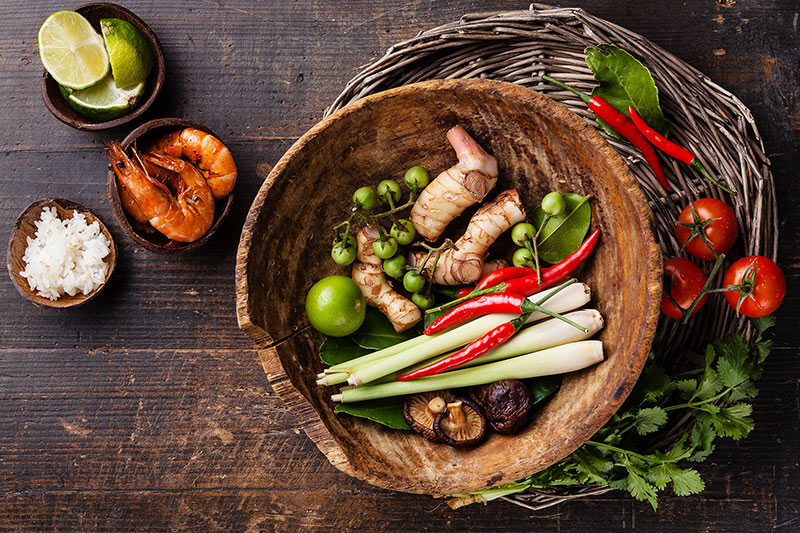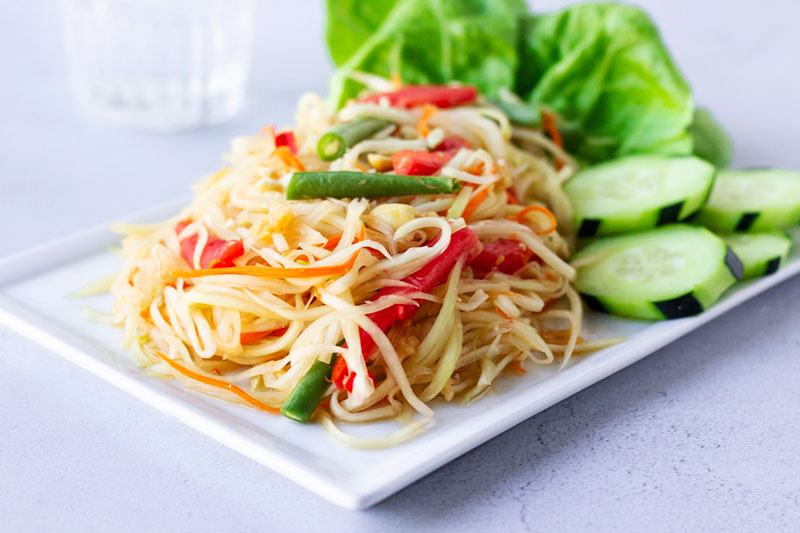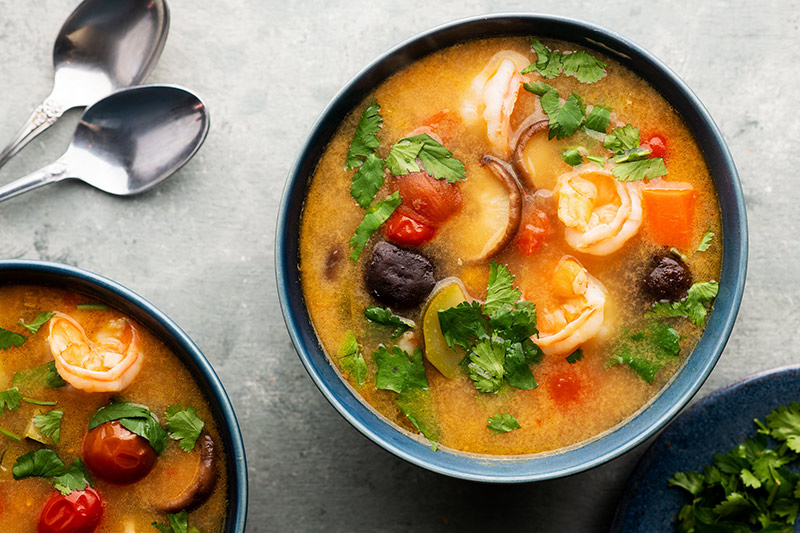Updated on June 9, 2025
Whether you’re enjoying a refreshing salad or a stir-fried plate of noodles, there are always recognizable health benefits to Thai food. This comes down to the combination of fresh vegetables, soothing herbs, nutrient-rich ingredients, and authentic cooking techniques in Thailand’s own native cuisine.
Many of Thailand’s most popular dishes cam be enjoyed by guests in luxury private villas in Phuket and high-end private villas in Koh Samui, often without the need to leave their properties. While some of these dishes may be richer than others in terms of texture–and sometimes calories–the best part is that Thai cuisine has its own special health benefits for everyone.
Related article: 10 Best Vegan Thai Dishes
The Ingredients that Make the Healthiest Thai Food

Thai cuisine is famed for its spiciness, and anyone who loves spicy food can actually reap the benefits of the chilies as they are also good sources of vitamins. But what really sets Thai food apart are the unique herbs and plant-based ingredients commonly used in their dishes.
Lemongrass, for instance, is a great source of iron and potassium. Ginger, on the other hand, is an immune-boosting root crop with antioxidant properties that helps reduce inflammation and can be useful in treating an upset stomach. Galangal or Thai ginger is a common ingredient in Chinese herbal medicine that’s known for healing qualities, including helping with digestion.
Other herbs Thai chefs swear by include basil, coriander, and kaffir leaves. These herbs pack a lot of punch, add an aromatic quality, and provide natural sources of fiber, minerals, and antioxidants.
In addition, limes and other citrus fruits common in Thai foods are rich sources of vitamins and minerals, boosting the immune system and providing a good balance of nutrients. This also contributes to the sour, acidic flavor profile that can be found in Thai soups and salads.
Related article: 10 Best Thai Cuisine Served in Phuket
How To Choose The Best Thai Dishes with Health Benefits
Just because Thai food has health benefits does not automatically mean you should stack up on the calories during your visit to Phuket or Koh Samui. Knowing the benefits, however, means expanding your palate past spring rolls, stir fries, and pad Thai. Here are tips on how to choose the healthiest Thai food.
1. Brush Up on Your Thai Cooking Knowledge

While stir-frying is an essential component of Thai cuisine, that doesn’t mean you have to live on fried food alone. Refreshing yet flavorful dishes such as green papaya salad are prepared with minimum to low cooking heat, making them relatively healthier with less fat and more flavor.
2. Master The Art of Balance
Say that you’re going to indulge in a plate of pad thai, which some dietary experts have pegged at around 300 calories per serving. Instead of cutting down on the amount of pad thai you will eat, you can ask your chef to add more vegetables to your dish, or substitute tofu for the chicken or shrimp. If you plan on leaving room for dessert, skip the sticky rice treats and just go straight for the tropical fruit.
2. Learn From The Experts
The best way to discover Thai food is with a Thai chef, so you can ask your in-villa private chef to make some Thai dishes for you during your stay in Phuket or Koh Samui. This way, you can discover new dishes that can fit your dietary preferences. For added fun, you may also ask your villa’s Guest Experience services to help arrange for an in-villa cooking lesson with a professional chef.
Related Article: Taste the Culture: Experience Koh Samui through Thai Cooking Classes
Enjoy Thai Food The Healthy Way
What makes Thai food healthy is not always dependent on the number of calories or nutrients in any given dish. The balance between sweet, sour, salty, spicy and creamy components that make many Thai dishes contribute to a taste experience that have their place within many dietary preferences.
Learning more about the health benefits of Thai food can not only make your gastronomic experience more enjoyable, but it should also expand your understanding of what makes it unique to its culture. Expand your knowledge beyond the familiar, and you might even find something that would improve your health as well as your taste buds.
Get a chance to widen your palate with Food and Travel.
—
Featured photo: Spruce Eats






